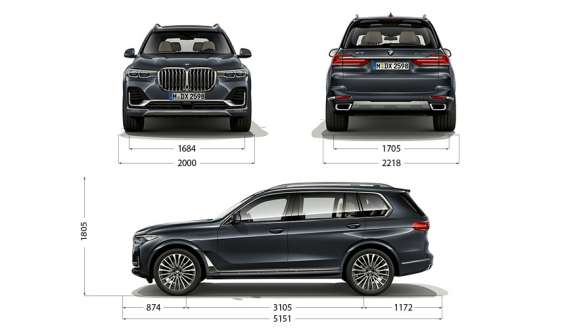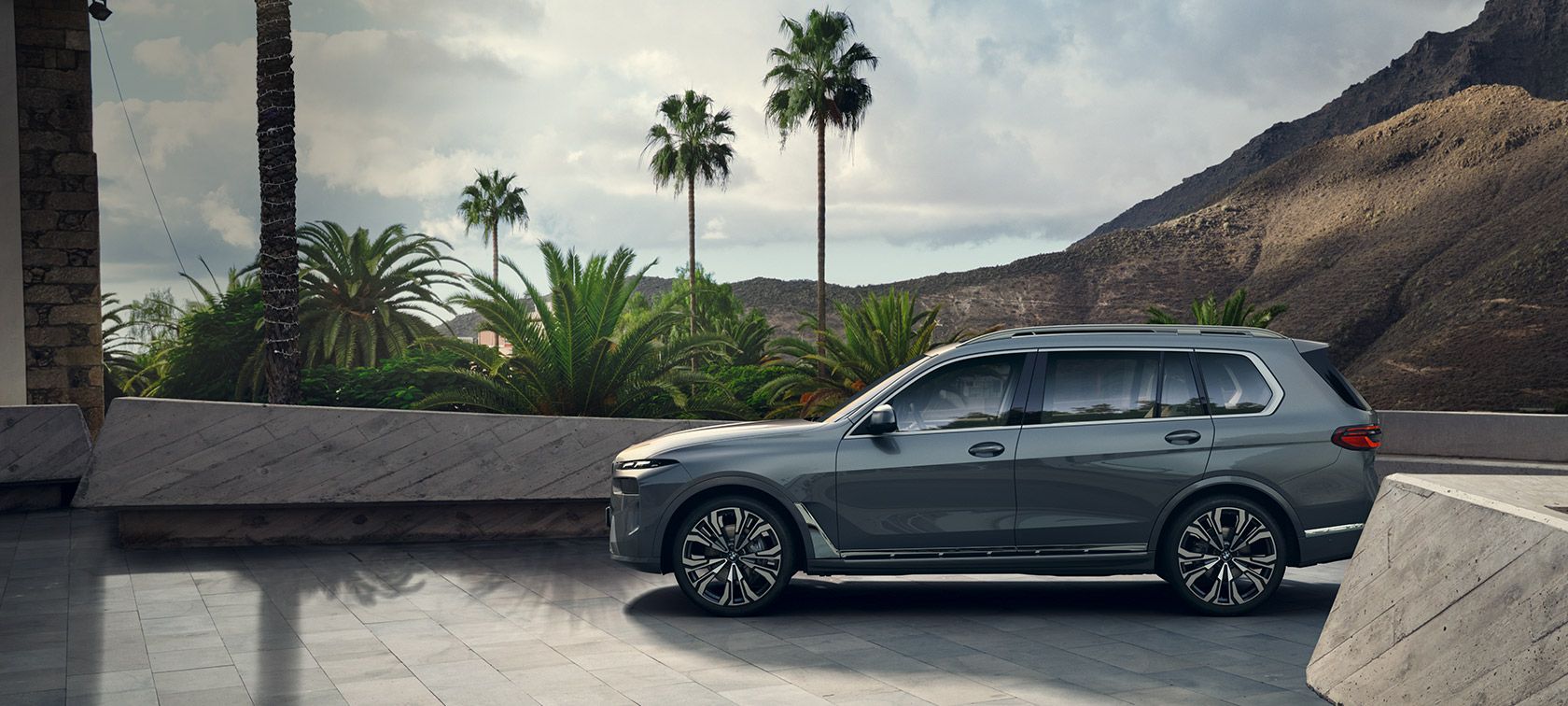The key facts and figures for the new BMW X7 at a glance:
- Engine, consumption and CO2 emissions
- Performance data such as displacement, hp, Nm and acceleration
- Weight, dimensions, wheel and tyre sizes
BMW X7 xDRIVE40i: TECHNICAL DATA.

Unladen weight EU in kg
2,490
Max. permissible weight in kg
3,215
Permitted load in kg
800
Permitted axle load front/rear in kg
1,340/1,945
Luggage capacity min. (seats up) in l
300
Luggage capacity max. (seats down) in l
2,120
Trailer load (unbraked) in kg
750
Trailer load 8% (braked) in kg
3,500
Trailer load 12% (braked) in kg
3,500
Cylinders/valves
6/4
Capacity in ccm
2.998
Stroke/bore in mm
94.4/82.0
Engine power in kW (hp) at 1/min
280 (381)/5,200-6,250
Engine torque (Nm) at 1/min
520/1,850-5,000
Compression ratio : 1
11.0
Top speed in km/h
250
Acceleration 0–100 km/h in s
5.8
Combined in l/100 km
10.6-9.6
CO2 combined emissions in g/km
240-217
Tank capacity, approx. in l
83
Tyre dimensions front
275/50 R20 113 W XL
Tyre dimensions rear
275/50 R20 113 W XL
Wheel dimensions and material front
8.5 J x 20 inches, light-alloy
Wheel dimensions and material rear
8.5 J x 20 inches, light-alloy
Fuel consumption and CO2 emissions.
BMW sDrive18i
Fuel consumption, combined WLTP in l/100 km: 6.8
CO2 emissions, combined WLTP in g/km: 156
The values of the vehicles labelled with (2) are preliminary.
The values of fuel consumptions, CO2 emissions and energy consumptions shown were determined according to the European Regulation (EC) 715/2007 in the version applicable at the time of type approval. The figures refer to a vehicle with basic configuration in Germany and the range shown considers optional equipment and the different size of wheels and tires available on the selected model.
The CO2 efficiency specifications are determined according to Directive 1999/94/EC and the European Regulation in its current version applicable. The values shown are based on the fuel consumption, CO2 values and energy consumptions according to the NEDC cycle for the classification.
For further information about the official fuel consumption and the specific CO2 emission of new passenger cars can be taken out of the „handbook of fuel consumption, the CO2 emission and power consumption of new passenger cars“, which is available at all selling points and at https://www.dat.de/angebote/verlagsprodukte/leitfaden-kraftstoffverbrauch.html
All technical data are indicative only and varies as per market and configuration. For more information, please check with your local dealer for all fuel consumption and CO2 emissions.
